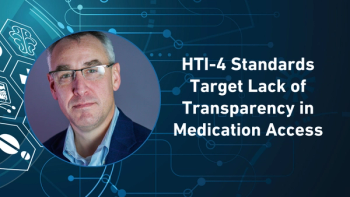
Right product, right place, right away
A prescription for making the pharma supply chain more resilient, reliable and disruption-proof
As profoundly as the shift to remote work has changed the overall work experience for many of us, it also has robbed us of one of the most hallowed of workplace institutions: the water cooler gab session.
These casual conversations still occur, albeit more often on a computer screen than around an actual water cooler. And when they do, the subject often has little to do with the typical stuff like sports, the weather or the kids. These days, not surprisingly, people are talking about the Covid-19 pandemic, variants, vaccines and whether there’s an end in sight. More surprising is how frequently the supply chain subject comes up during these discussions. People are frustrated because they can’t get the car they want, or the gaming console their child covets, or the building supplies they need to finish a home improvement project. Everyone, it seems, has a supply chain grievance to share.
Because of my company’s work in the healthcare and life sciences fields, as well as my own personal pandemic experiences, I do a lot of thinking about both these subjects. In the world of healthcare and medicine, the unavailability of a drug, treatment option or piece of medical equipment when and where it’s needed due to a supply chain issue may not only be frustrating, it could threaten a person’s health.
During a recent discussion around the virtual water cooler, one of my colleagues mentioned that her pharmacy was having difficulty getting her asthma medication. Issues like this, along with reported shortages of everything from wheelchairs to blood pressure drugs, are continuing to dial up the sense of urgency to build the greater resilience and reliability the medical supply chain must have to deliver on its top priority: serving the end patient by ensuring the right drugs or equipment are available when and where they are needed.
Based on our ongoing supply chain work in the medical/healthcare field, we see several positive steps the various parts of the drug supply chain can take today, individually and collectively, to maximize resilience and minimize the fodder they provide for those virtual discussions.
Moving production closer to market
This is one of the more obvious—and obviously effective—steps. Shifting production of a vaccine (or any pharmaceutical product) closer to market requires fast, efficient and secure technology and data transfer between the development and production of new molecules, and between production sites for commercialized medicines. This “digital thread” ensures that the entire manufacturing organization, as well as the various parts of a supply chain, wholesale and retail, upstream and downstream, are working off a single source of truth about a specific product. As a result, the manufacturing base and the supply chain are able to synch around real-time data to make more informed in-the-moment decisions and avoid disruptions.
As we’ve seen during the Covid-19 crisis, this digital thread can accelerate the scale-up of complex treatments, improve patient outcomes and avoid compliance problems. Some of the world’s largest pharma companies have relied on this approach in working with material suppliers, contract manufacturers, distributors, public entities and others to execute aggressive vaccine production and roll-out strategies.
Track and trace
There’s also talk of how track-and-trace capabilities and jurisdictional control tools are playing an important role in ensuring the right medicines get to the right markets at the right time, while meeting varying compliance requirements along the way. With so little margin for error in the supply chain nowadays, a product market compliance approach called material segmentation allows certain characteristics approved by regulators for specific countries to be assigned, or tagged to specific material elements in inventory and to new orders, preventing unapproved materials from being shipped to the wrong place—and cutting liability and compliance cost for manufacturers in the process.
These same capabilities also help to manage supply of components and processes for medicines, medical devices and other health products that carry assigned regulatory approval status.
Batch release
Getting a firmer handle on batch release through greater digitization and automation is another key step in making the pharmaceutical supply chain more resilient. It’s been hard to miss the pandemic headlines about manufacturers and their production partners having to suspend operations at vaccine production plants, and having to discard hundreds of thousands of vaccine doses, all due to batch contamination.
A streamlined batch release process that enables a manufacturer and its partners to make sense of huge volumes of quality data from multiple sources and systems in order to rapidly evaluate batch quality and compliance is critical to avoiding incidents like these and elevating the public’s trust in pharmaceutical products.
Business network
Finally, let’s not overlook the connective tissue that holds all this together: the business network. Delivering products consumers can trust to markets around the world when and where they are needed, and doing so compliantly, requires real-time visibility into the inbound and outbound movements of materials and products every step of the way. In a business network where every segment of the supply chain is connected and working from a single pool of trusted data, they can share information and synchronize planning and execution.
As we’re seeing with the COVAX Facility1 orchestrated by Gavi, Unicef and others, and with SAP’s own Vaccination Collaboration Hub,2 the collaboration and alignment that a business network fosters can be a powerful counter to disruption, helping to maintain the world’s confidence in the medical supply chain, and in the process, giving people one less complaint to air around the water cooler.
About the author
Peter Maier is President of Industries and Customer Advisory at SAP.
References
1.
2.
Newsletter
Stay ahead in the life sciences industry with Pharmaceutical Commerce, the latest news, trends, and strategies in drug distribution, commercialization, and market access.




